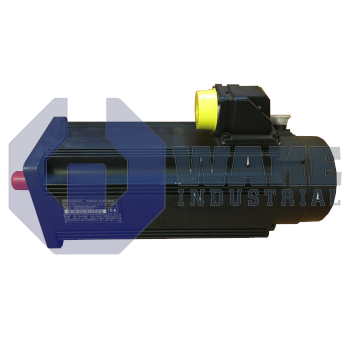Product Description
Rexroth Bosch's MAC093C-0-FS-4-C/130-B-1/WA605XX AC motor can only be operated under ambient temperature. The numerous components of the MAC series electric motor operate together to generate the mechanical energy required to power a coupled machine. The stator uses the electric current to produce a magnetic field. The rotor can spin smoothly because of the bearings that support it. The commutator switches the current going through the rotor, causing it to rotate in only one direction. The AC motor cannot overheat because of the cooling system's ability to disperse heat produced during operation.
The MAC093C-0-FS-4-C/130-B-1/WA605XX has an encoder and convection cooling system. There are several parts in an electric motor that distribute the heat produced by the motor. Heat is produced, for instance, by losses in the rotor magnets, stator laminations, stator end-windings, and stator slot-windings. The type of motor and its operating parameters determine how the heat generated within the various parts is distributed. Natural convection is the selected cooling method for this MAC motor. The direction of the current flowing between the external circuit and rotor is periodically reversed by a commutator. It is comprised of a revolving motor armature with a cylinder made up of several metal contact segments.
For process efficiency and product quality to be guaranteed, a constant motor speed or torque must be maintained. Feedback control ensures that the motor doesn't undershoot and overshoot its determined speed by assisting in adjusting the speed of the AC motor to meet specified needs. In AC motor systems, feedback control involves monitoring and adjusting several parameters while the motor is operating through the use of control systems and sensors.
 Wake Industrial Warranty
Wake Industrial Warranty















